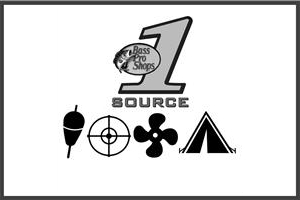
To best understand how to successfully troll the open water, you must first undertstand the gear and mechanics of the tactic. Trolling on the open water consists of a tool called a planer board. Planer boards come in a variety of sizes, makes and models, but the concept is the same for all of them. I prefer the yellow Offshore Tackle in line planer board (model number OR12).
Here’s how it works. Take your lure of choice. In this case, lets use a crawler harness. I like to use inline weights, like a one or two ounce, to bring my harness down to their desired depth. First you clip on the inline weight to your fishing line and then the harness behind it. Let out the desired amount of line to reach your preferred depth and then clip on the inline planer board. Set the board in the water and let out more line. The board will then begin to plane through the water, pulling your bait away from the boat. There are a number of advantages to the planer board. For one, if you are fishing shallow water or the fish are suspended high in the water column, the boat might spook the fish as it trolls over top of them. As they scatter away from the noise and shadow of the boat, the fish swim right into the strike zone of the planer boards. Another advantage is that you can troll a large number of lines without getting tangled.
There are a number of advantages to the planer board. For one, if you are fishing shallow water or the fish are suspended high in the water column, the boat might spook the fish as it trolls over top of them. As they scatter away from the noise and shadow of the boat, the fish swim right into the strike zone of the planer boards. Another advantage is that you can troll a large number of lines without getting tangled.
So how do you know if you have a fish on, and then what do you do? The first thing you are going to want to do with your planer boards is install a system called the tattle flag. The tattle flag is an upgrade component (Model number OR12TF) that allows you to read the board more accurately. If a large fish hits your bait, the board will ride low in the water and pull way back out of formation making it easy to read. However if a small fish strikes your bait, or if you pick up some sea weed on your harness, the flag will pull down notifying you that you need to bring the line in and check the bait.
I like to use up to four to six planer boards at a time depending on how many people are fishing with me. Two to three boards on each side of the boat and multiple baits on each rod. I even like to mix crank baits and crawler harness a little of each and let the fish tell me what they want.
Let’s go back and talk about the inline weights for trolling crawler harness. A lot of times people ask me how far do I let them out? There is no good diving chart for inlines. With the two ounce, my advice is to stagger them out on two lines the same way. For example, set one at 15 feet back and the rest at 25 ft , 35 ft, 45 ft and so on until one depth starts to work better than the others and you can start honing in on them that way.
With the one ounce weights, I do have a rule of thumb I can share with you. At speeds of 1.0 to 1.8 I have found that if you let out double the amount of line to the desired depths you are trying to reach, you will get close. For example, if you are marking fish on your locator at 20 feet down, then try letting out 40 feet of line with a 1 ounce weight. It’s not perfect, but it will be close.
Be sure to read my previous blog about “Rods and Reels” to see exactly what kind of rod and reel I prefer for trolling planer boards in open water.
Thanks to all and happy fishing!
Written by Dan Hassevoort
- 5710 views

